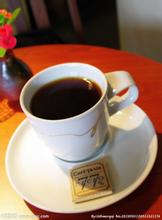An introduction to the flavor and taste of coffee from Manor Santa Barara, Honduras with a light fruity flavor.
Honduras is one of the least developed countries in Latin America. Agriculture is the leading industry of the national economy, and its industrial foundation is relatively weak. The economy grew by 3.5% in 2012. Rich in bananas, coffee, cotton, coconut, tobacco, sugar cane and so on. Economic activity and population are mainly concentrated in the capital and the central and western parts of San Pedro Sula, while the east is sparsely populated. There are many small enterprises in industry and mining, such as textile, tobacco, sugar, dairy, wood processing, metallurgy, chemistry and so on. The mining industry is mainly silver mining. Exports are mainly bananas and coffee, accounting for more than half of the total export value, as well as timber, Manila hemp and mineral products, as well as imported textiles, food, machinery and equipment, petroleum products and so on. [3]
Agriculture
When it comes to coffee production, the geographical conditions of Honduras are no less than those of neighboring coffee-producing countries such as Guatemala and Nicaragua. However, due to the lack of strong support in the settlement and transportation of raw beans, Honduras is less well-known in the consumer market. Honduras (Honduras) exported $246424000 of coffee in 2010. It mainly exports coffee, bananas, palm oil, shrimp, sugar, tobacco and other crops and mineral products such as zinc, lead and silver, mainly to the United States, the European Union and Central American countries; mainly imports machinery, electronic equipment, chemical products, fuels, lubricants, manufactured products and grain, and the main source countries are the United States, the European Union, Central American countries and Japan. In 2012, Hong exported US $4.42 billion and imported US $9.504 billion. Year-on-year growth of 13.4% and 6.2%, respectively, on the Reo Platano Biosphere Reserve (also translated as the Platano River Biosphere Reserve, Spanish: Reserva de la biosfera de R í o P á tano, English: r í o P á tano Biosphere Reserve) is a protected area on the Caribbean coast of Honduras, covering an area of 5250 square kilometers, roughly along the Platano River. The Reo Platano Biosphere Reserve, which has many endangered species, was listed on the UNESCO World Heritage list in 1982 and on the endangered World Heritage list twice. The reserve is a tropical rain forest made up of mountains and lowlands, with more than 2000 species of animals and plants. The region is also part of the Central American Biological Corridor from Mexico to Central America.
Honduran coffee seems strange to many coffee drinkers.
When it comes to coffee production, the geographical conditions of Honduras are no less than those of neighboring coffee-producing countries such as Guatemala and Nicaragua.
However, in the past, Honduras was less well-known in the consumer market because it did not have strong support in the handling and transportation of raw beans. However, in recent years, the country has begun to change dramatically, and the emphasis on the coffee industry has slowly opened up the international popularity of coffee from Honduras.
There are six main coffee producing areas in Honduras, including Santa Barbara, Copan, Ocotepeque, Lempira, La Paz and El Paraiso in the southeast. Honduran coffee tastes less acidic, while caramel is more sweet.
The taste of coffee from these five different producing areas is also slightly different, some slightly sour, some have a unique flavor. Its quality is not bad at present, but because it is still promoting its popularity, the price of coffee in the country is actually quite competitive.
Because of its flavor characteristics, making a single product or adding comprehensive coffee, or even one of the beans with Espresso ingredients is a good choice for flavor and taste characteristics: good flavor, rich and mellow, suitable for mixed drinking. Honduran coffee bean Honduras, the most obvious feeling is relatively soft and thick, occasionally feel a little sweet Low acidity, in the coffee producing areas of Central America, Honduran coffee is famous for its black berry flavor and caramel sweet, medium mellow thickness, and even in some batches of coffee with black pepper and cut tobacco flavor Hongduras coffee has a rich and mellow taste, the taste is not astringent, not sour, mellow and aroma are very high, quite individual. Honduran coffee can lead to multiple levels of flavor depending on the degree of roasting. Moderate baking can maximize the sweetness of beans, while deep baking increases bitterness, but sweetness does not disappear. Generally speaking, medium roasting has the best taste and has a rich and unique aroma. Honduras's high-quality coffee is favored by coffee lovers in Honduras. High-quality coffee in Honduras uses a washing method to deal with coffee beans, usually after soaking. Defective fruit will surface and can be discarded first. Then put the good fruit into the fruit peeling machine and peel off the peel with the rotating force of the machine. Peeled fruits are screened by machines to select fruits of high quality. Usually the bigger the fruit, the better the maturity. Coffee in Honduras is dried in the sun, so there is always a hint of fruit in the taste. Hongdulas coffee beans are large in shape, uniform in size and uniform in color. In order to facilitate harvesting, farmers will prune the coffee trees to no more than 150 centimeters, because if they grow too high, they have to set up ladders to pick, which is not only time-consuming, but also may damage the trees by bending branches. As the ripening period of each fruit of coffee beans is different, in order to maintain the good quality of coffee beans, it is necessary to pick them manually, and then select the ripe fruits. Coffee fruits from the same branch often take several weeks to harvest before they are fully harvested. Honduras is located in the north of Central America, the Caribbean Sea to the north, the Gulf of Fonseca in the Pacific Ocean to the south, Nicaragua and El Salvador to the east and south, and Guatemala to the west, mostly mountains and plateaus. It has a tropical climate, mild temperature and abundant rainfall, so it is an ideal place for coffee growth.
Honduras produces two kinds of coffee of very good quality, which are highly respected by coffee lovers. One is "Highland Coffee", which grows at an altitude of 1000 to 1500 meters, and the other is "selected Highland Coffee", which represents the highest level of Honduras, which grows at an altitude of 1500 to 2000 meters. Most Honduran coffee is exported to the United States and Germany.

Important Notice :
前街咖啡 FrontStreet Coffee has moved to new addredd:
FrontStreet Coffee Address: 315,Donghua East Road,GuangZhou
Tel:020 38364473
- Prev

Indonesian Kopi Luwak Manor with better taste and flavor introduce Kahayang Gan Manor
A number of scattered feudal kingdoms were established in the 7th century AD. Recorded dynasties include the death of the Buddhist Sri Buddha (mid-7th century-1293), who was conquered by Manabache, and the Kingdom of New Keshari, which controlled the Strait of Malacca (1222-1292), which led to the Yuan-claw War, and then the royal family established the most powerful Malacca in Indonesian history in Java with the help of the Yuan army.
- Next

Introduction of Malt-scented Panamanian Coffee Jade Manor Fine Coffee Bean Flavor
The old world is famous for its ancient morning taste. Yega Xuefei in Sidamo is suitable for sun treatment with its unique small seed coffee, so that the fully ripe fruit is picked by hand, washed and dried on the mat floor, kept in the state of parchment before shipment, and screened by shelling machine.
Related
- Does Rose Summer choose Blue, Green or Red? Detailed explanation of Rose Summer Coffee plots and Classification in Panamanian Jade Manor
- What is the difference between the origin, producing area, processing plant, cooperative and manor of coffee beans?
- How fine does the espresso powder fit? how to grind the espresso?
- Sca coffee roasting degree color card coffee roasting degree 8 roasting color values what do you mean?
- The practice of lattes: how to make lattes at home
- Introduction to Indonesian Fine Coffee beans-- Java Coffee producing area of Indonesian Arabica Coffee
- How much will the flavor of light and medium roasted rose summer be expressed? What baking level is rose summer suitable for?
- Introduction to the characteristics of washing, sun-drying or wet-planing coffee commonly used in Mantenin, Indonesia
- Price characteristics of Arabica Coffee Bean Starbucks introduction to Manning Coffee Bean Taste producing area Variety Manor
- What is the authentic Yega flavor? What are the flavor characteristics of the really excellent Yejasuffi coffee beans?

